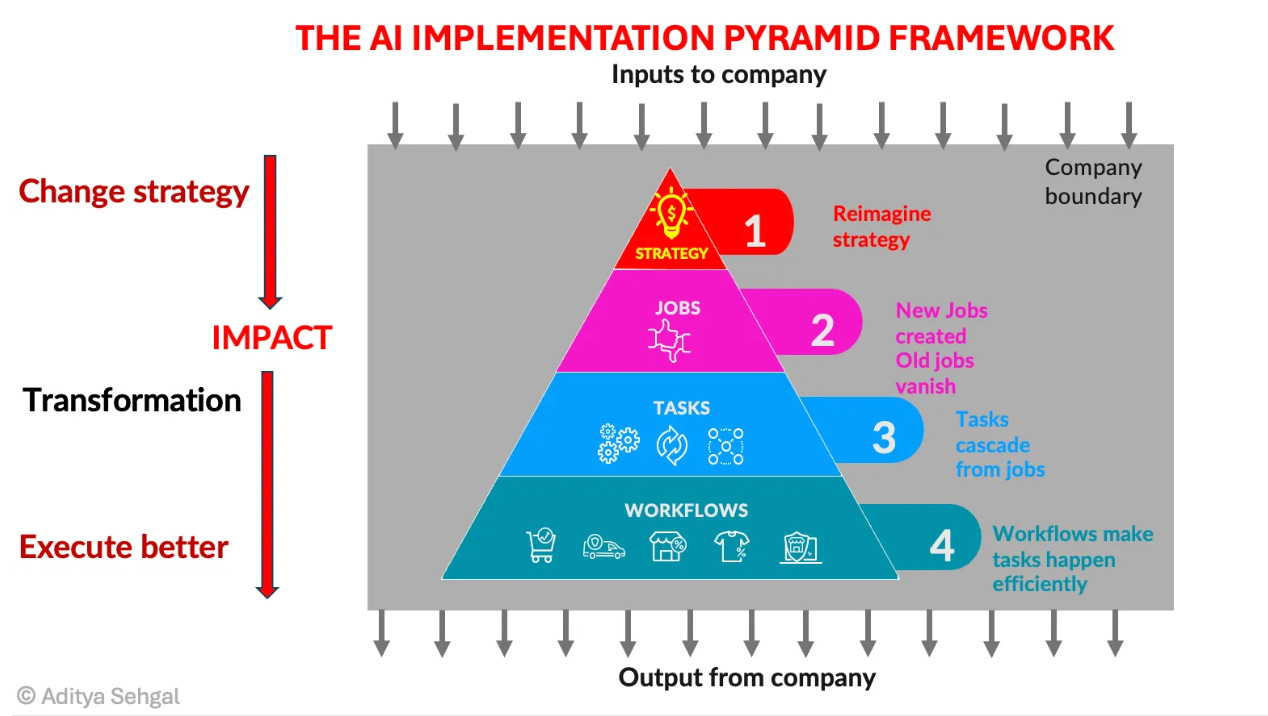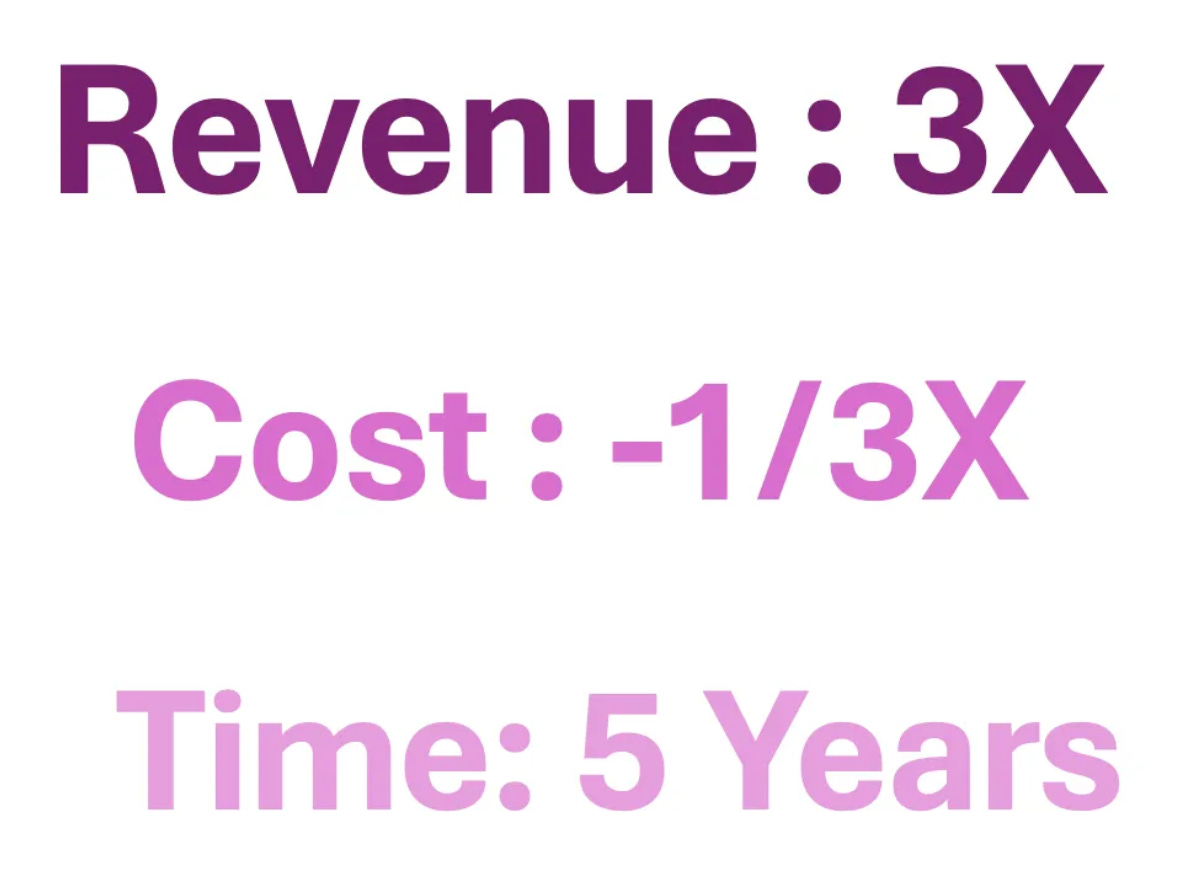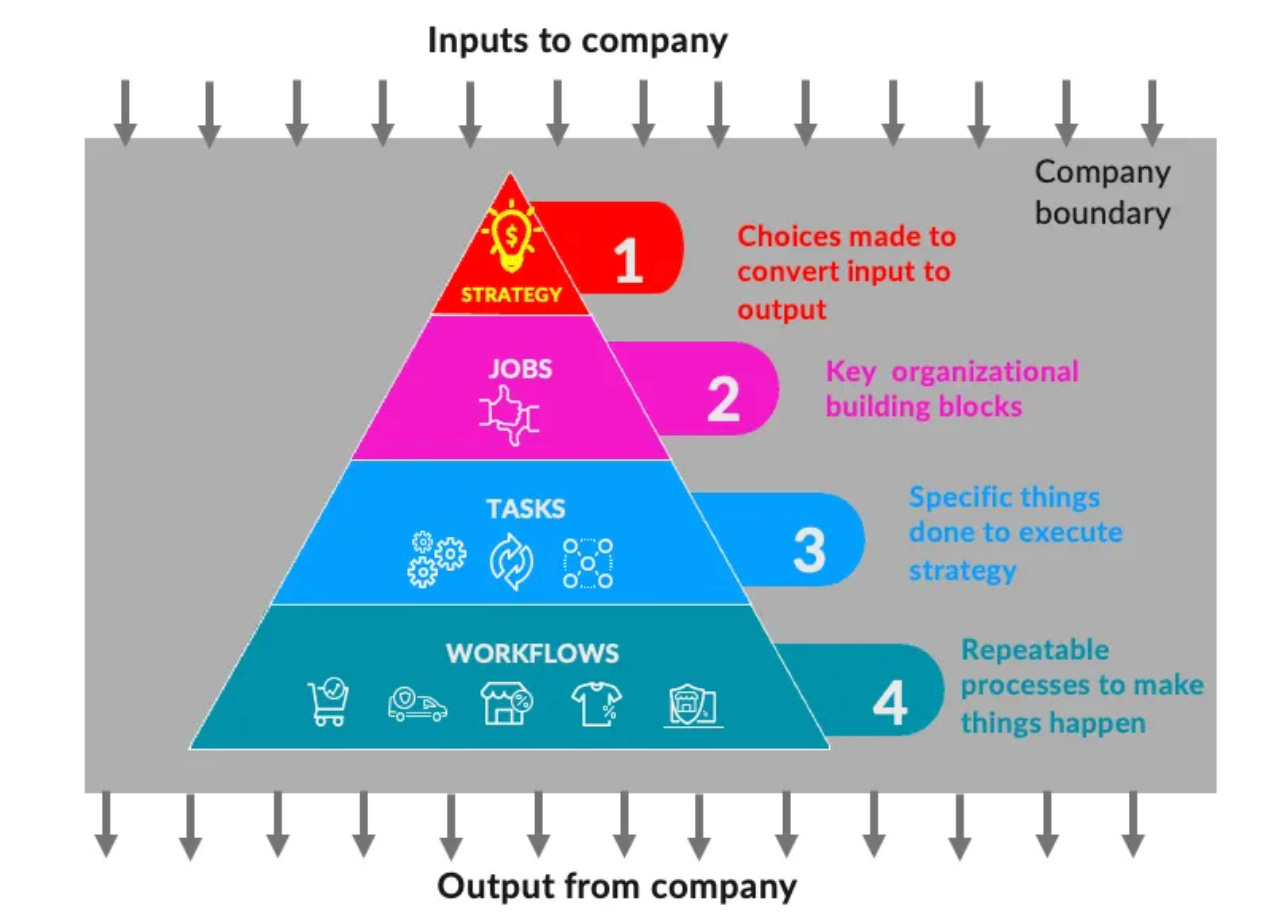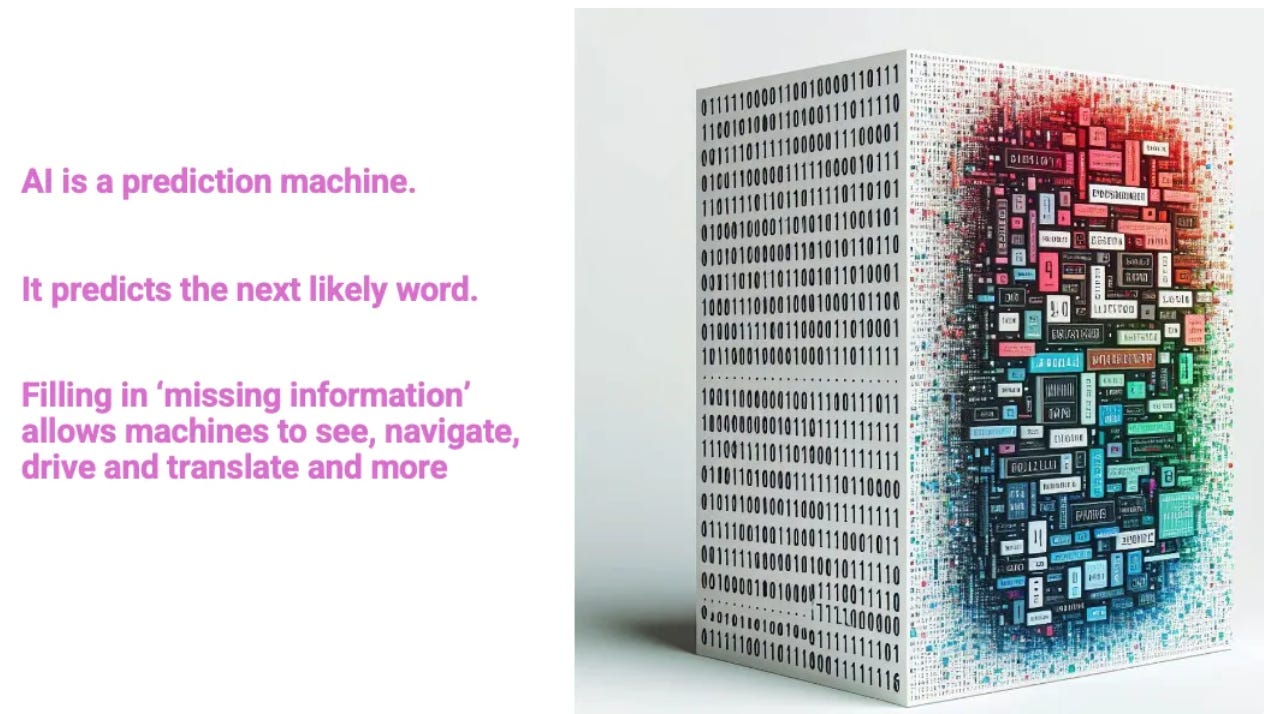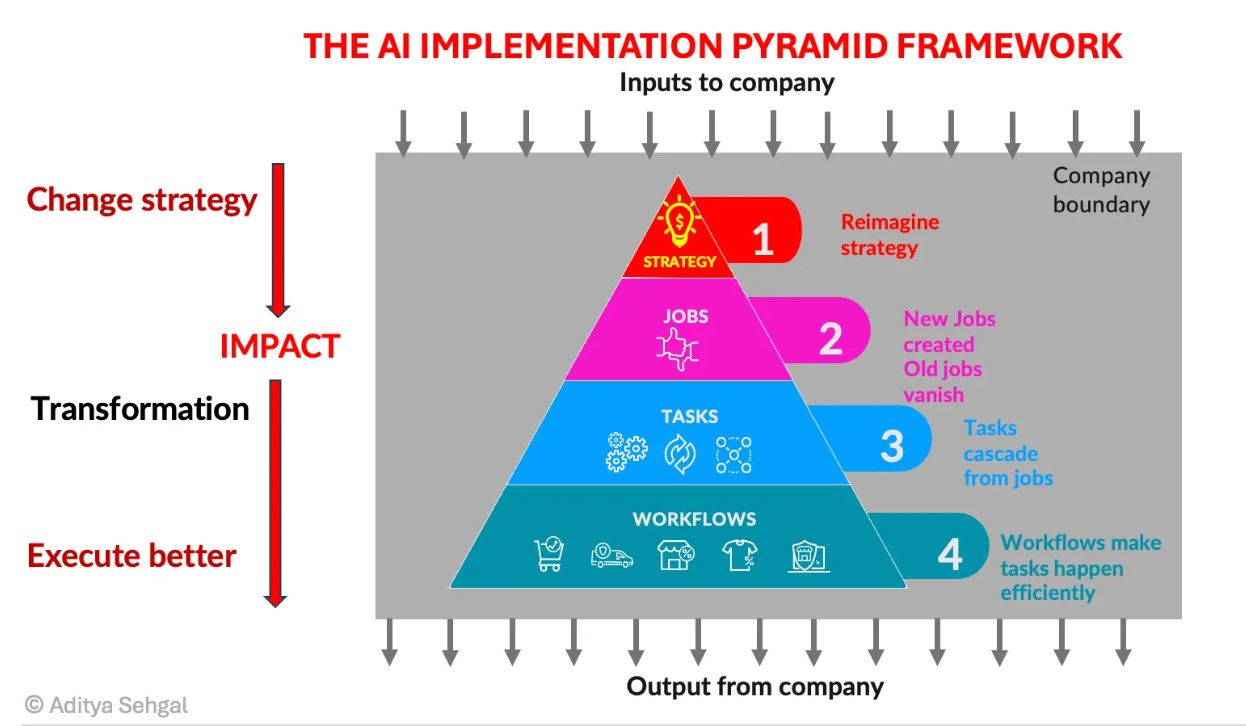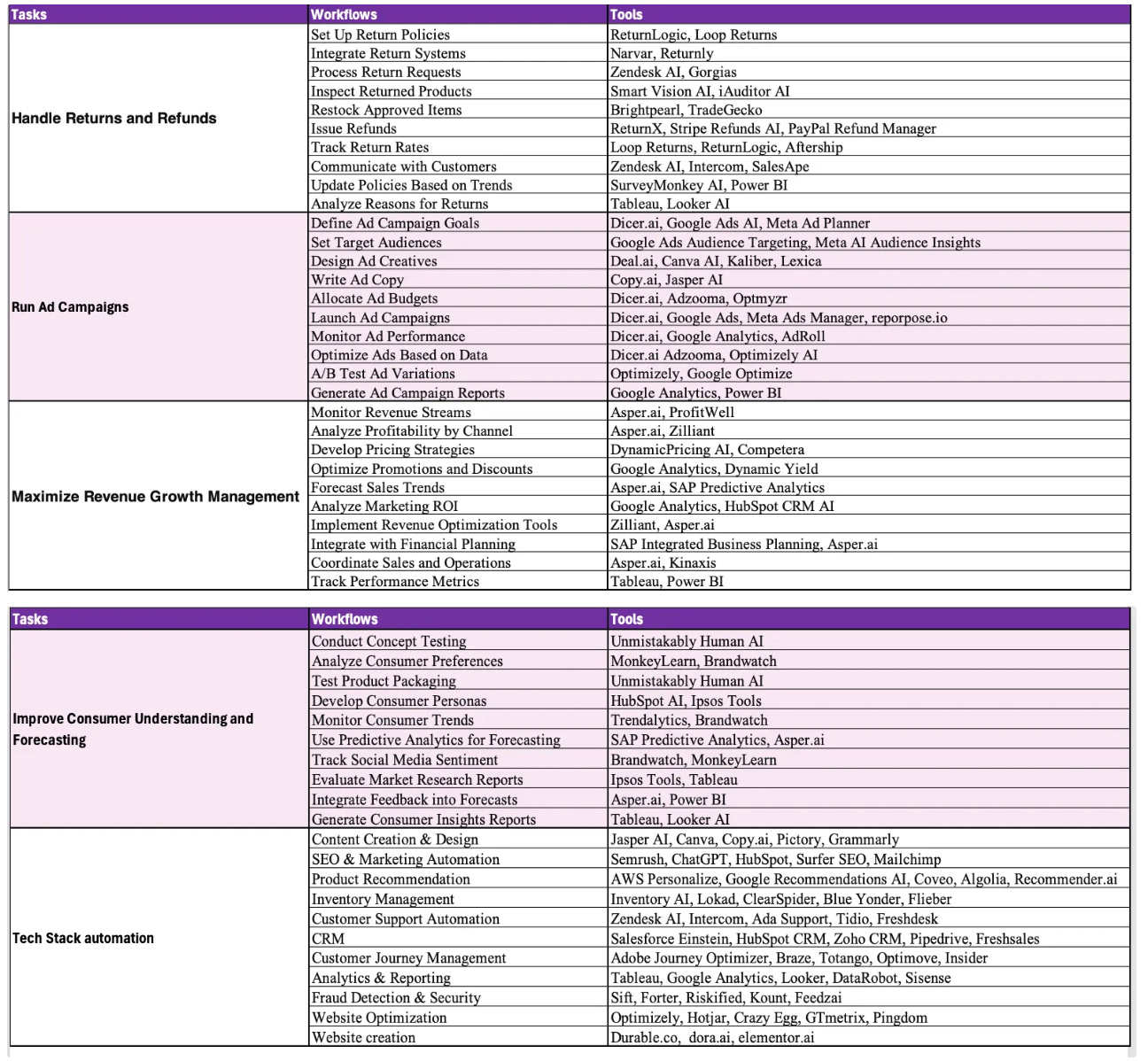The AI implementation pyramid framework for business
A framework for implementing AI to transform business. Warning: Long and dense post.
You have a choice —one that could propel your business to unprecedented success or lead it to bankruptcy—all within the next five years.
Will your company survive the next five years? It depends on whether it becomes an AI user or an AI loser.
The Opportunity:
Imagine tripling your current business revenue. Now, envision cutting your fixed costs by one-third. Calculate what this would mean for your profitability.
Does your business have this kind of ambitious AI objective?
If not, your business risks becoming an AI loser.
AI is revolutionizing business at unprecedented speed—automating routine tasks, enabling sophisticated decision-making, and creating vast opportunities for transformation. Companies are finding innovative ways to delight customers, streamline operations, and develop groundbreaking products and services. As AI technology matures, its potential to drive business value grows exponentially.
Despite these clear benefits, many businesses struggle with AI implementation. While most have launched pilot projects or experiments, these efforts often fall short of AI's transformative potential. Companies take an overly cautious approach, treating AI as a mere technical upgrade rather than the fundamental business revolution it represents—leading to missed opportunities for innovation and growth.
Organizations face key hurdles to AI adoption: technical infrastructure, data quality, skill gaps, and change management. A critical challenge is the lack of a structured implementation approach that aligns with business goals while managing risks. Yet the most significant obstacle is ownership—the CEO and C-Suite must actively drive the AI transformation or risk falling behind.
I have developed a comprehensive AI implementation framework to address these challenges, bridging the gap between potential and reality. This framework offers a systematic approach to AI adoption that organizations can implement immediately, regardless of their technological maturity. It provides practical guidelines for assessment, planning, and execution while ensuring alignment with business strategy and organizational capabilities.
The AI implementation Pyramid Framework:
To understand this framework, visualize a company as a black box that processes inputs, including raw materials, capital, and stakeholders, into outputs like finished products, customer service, and financial results.
How does the company convert inputs to outputs?
The company has a strategy, which consists of the choices made by the company to convert inputs to outputs. Take Tesla's example—their original strategy may have been "To help save the world from the climate crisis by catalyzing the shift from fuel-based to electric cars."
To achieve its strategy, a company develops capabilities to perform key "jobs"—the fundamental organizational building blocks that support the strategy. For Tesla, these jobs include designing cars, building factories, managing manufacturing, procuring materials, managing sales channels, building brand awareness, and providing after-sales service.
Jobs are broken down into multiple tasks—specific activities required for execution. For instance, procuring materials includes finding suppliers, qualifying them, defining specifications, and running auctions.
Tasks further divide into workflows—repeatable processes that drive completion. For example, supplier qualification involves workflows like setting specifications, conducting audits, performing background checks, and analyzing credit worthiness.
A company operates through one strategy, supported by roughly 10+ jobs, 100+ tasks, and 2,000+ workflows.
If you're curious to see how your company fits into this framework, you can enter its name into this tool I created here:
It will generate an initial hypothesis of your strategy, key jobs, tasks, and underlying workflows.
As business leaders, we can use AI to transform the business at every level—from strategy to jobs, tasks, and workflows.
Where should we use AI?
Remember that AI is fundamentally a prediction machine—it predicts the next item in a given sequence. We then build logic frameworks and processes on top of these predictions, enabling capabilities like computer vision (seeing what should be there) and content generation (finding the next logical pixel in an image).
This means AI can help wherever we can identify a prediction problem to solve. These prediction problems can exist at any pyramid level—top, middle, or bottom. The type of AI solution we choose depends on the uncertainty we're addressing and the problem's criticality and risk level.
If a strategy, job, task, or workflow does not include a prediction challenge to solve, there may not be a compelling case for using AI in that area.
Using AI to transform strategy
When we apply AI at the top of the pyramid, we use it to reshape our strategy and transform the business model. When implemented at the task/workflow level, AI helps us execute better—growing the business, reducing costs, and improving both the speed and efficiency of key processes.
Many of us work in large companies but don't operate at the strategic level—hence, we don't think about using AI to rethink how the company can achieve its strategy at the strategy or jobs level. AI-first startups don't have any baggage and can create new businesses with more effective business models, unburdened by inertia, current systems, and costs.
In every industry, formidable AI-first competitors will emerge and disrupt the market. They will leverage AI to create "Magic" unfair advantages (see my previous substack here: Magic Framework for ‘Unfair’ Competitive Advantage.
Let's go back to the Tesla example. About 75 million cars are produced every year worldwide. Tesla can produce about 2.5 million vehicles annually. To grow to 10% market share, Tesla would need to quadruple its capacity to 8 million cars a year. At $2 billion in capital expenditure per million cars, adding another 6 million vehicles annually could cost $10 billion and take several years.
Let's use a different lens and explore how AI could help Tesla achieve a 10% global share without this capital expenditure.
Let's assume that Tesla engineers could solve two prediction challenges:
Knowing where and when people need a car
Tesla cars can "see" the road in front of them and drive autonomously, so they can be used as auto taxis.
Both of these prediction challenges are well on their way to being solved.
If Tesla could solve these problems, it could use its fleet as robotaxis to meet 10% of global car demand—while achieving its goal of reducing the overall travel impact on the planet.
Let's do some math around this problem.
A study by the RAC found that cars were idle 96.5% of the time, meaning they were used just 3.5% of the time and parked 96.5% of the day. For simplicity, let's assume cars are used 5% of the time.
Assuming the average life of a car is 10 years, the total rolling stock of cars in the world = 75 million sold every year × 10 = 750 million.
Since cars are used only about 5% of the time, if they were being used 100% of the time, we would need 750 million × 5% = 37.5 million cars.
Let's assume that with good planning and allocation, cars can be used 25% of the time—that means we need 37.5 million × 25%/5% = 37.5 million × 5 = 188 million cars. If these cars wear out in just 7 years, we'll need to produce 188 million/7 = 27 million cars to be sold yearly.
Against this, Tesla already has a capacity of 2.5 million cars annually. With no capacity increase, it can achieve a market share of 2.5/27 = 9.3%.
This will upend the car market—we'll stop buying cars and instead lease them by the minute. It will also disrupt legacy car manufacturers, who won't be able to compete. Tesla would have created a "Magic" formula for success.
All it has to do is use AI to solve its two prediction challenges.
Is it surprising that Elon Musk has focused on self-driving robotaxis and ensuring every Tesla can navigate autonomously with future software updates?
Let's take another example—consider Amazon.
Currently, the model is shop-then-ship—the customer shops and then Amazon ships. The customer returns between 5-25% of shipments (depending on category and market).
Now, let's assume Amazon can solve the predictive challenge of forecasting what customers want with 90% accuracy. They could move to a ship-then-shop model where Amazon sends consumers what the AI thinks they need, and if consumers don't like it, they return it. If Amazon's AI can achieve this 90% accuracy, there's no incremental returns cost, and Amazon can reconfigure its operating model. This reconfiguration can eliminate many jobs, tasks, and workflows. Theoretically, Amazon could replace its website with a simple chat interface. Because the AI can plan better, it can ship from fewer warehouses more efficiently and reduce billions in shipping and logistics costs.
If a company uses AI to innovate higher in the pyramid, whole swathes of jobs, tasks, and workflows can become obsolete instantly, and companies can save enormous sums of money.
Of course, there's a disruption risk for large companies in taking such bold steps—they're more likely to use AI bottom-up to transform the company while prudently managing risks rather than top-down. This is sensible, but they must remember that these issues don't bind their new competition and will challenge them with AI solutions embedded at the heart of their strategy—leading to disproportionate speed and cost advantages versus these large incumbents.
Using AI to transform effectiveness and efficiency:
Using AI to solve predictive challenges at lower levels of the pyramid can dramatically reduce costs and increase efficiency. AI can automate various workflows, such as media buying and content creation. Once multiple workflows within a task are automated, it becomes possible to automate the entire task. With enough automated tasks, AI could potentially automate entire jobs. For example, I expect many Marketing departments to be primarily AI-driven within the next 5 years.
Thousands of AI tools are already unbundling companies one workflow at a time. In the coming years, clear winners will emerge in these areas, leading to new tools and highly valuable AI companies. These companies will drive AI transformation while specializing in core workflows, using AI to solve predictive challenges and improve effectiveness and efficiency.
As an example, I put together the tasks and workflows for the 'Digital Commerce job' in a company, along with currently available AI tools for each of these workflows:
As you can see, literally hundreds of tools are already available to automate your workflows. What you probably lack is awareness of these.
Implementing AI transformation in business using the AI implementation pyramid framework:
Write down your business strategy and create a pyramid of Strategy - Jobs - Tasks - Workflows based on your business knowledge
Compare it with the output from my brAIn tool here
Finalize your list
Identify a strategic predictive challenge that could transform your entire organization.
Evaluate its feasibility and risk level.
If you decide against implementation, imagine how you would respond if a competitor executed this strategy. Create and test a defence plan through war gaming exercises.
Regularly revisit this question during strategy reviews—is it time to pivot and transform your business model?
Select at least five ‘low hanging’ tasks with all their associated workflows for AI automation. Organize a workshop to identify the key predictive challenges for each workflow. Begin testing available AI tools with the goal of fully automating all these workflows and, therefore, the five tasks.
Leverage your existing teams to train and refine the AI models. As they gain expertise in AI transformation, deploy these trained teams to implement AI across additional workflows and tasks until you achieve organization-wide transformation over the next three years.
Enablers
Establish a network of external partnerships for the tools you're testing. Ensure these tools are designed to be transferred in-house rather than becoming permanent consulting engagements.
Meet with the IT department to implement organization-wide LLM access. Configure this access as "private" to prevent your company's data from being used to train external LLMs.
If you liked this post or found it helpful, please share it in your networks or with anyone who could benefit from it.
Check out some of my other Frameworks on the Fast Frameworks Substack:
A New Year Wish: eBook with consolidated Frameworks for Fulfilment
AI Giveaways Series Part 4: Meet Your AI Lawyer. Draft a contract in under a minute.
AI Giveaways Series Part 3: Create Sophisticated Presentations in Under 2 Minutes
AI Giveaways Series Part 2: Create Compelling Visuals from Text in 30 Seconds
AI Giveaways Series Part 1: Build a Website for Free in 90 Seconds
Business organisation frameworks
The delayed gratification framework for intelligent investing
The Fast Frameworks eBook+ Podcast: High-Impact Negotiation Frameworks Part 2-5
The Fast Frameworks eBook+ Podcast: High-Impact Negotiation Frameworks Part 1
Fast Frameworks: A.I. Tools - NotebookLM
The triple filter speech framework
High-Impact Negotiation Frameworks: 5/5 - pressure and unethical tactics
High-impact negotiation frameworks 4/5 - end-stage tactics
High-impact negotiation frameworks 3/5 - middle-stage tactics
High-impact negotiation frameworks 2/5 - early-stage tactics
High-impact negotiation frameworks 1/5 - Negotiating principles
Milestone 53 - reflections on completing 66% of the journey
The exponential growth framework
Fast Frameworks: A.I. Tools - Chatbots
Video: A.I. Frameworks by Aditya Sehgal
The job satisfaction framework
Fast Frameworks - A.I. Tools - Suno.AI
The Set Point Framework for Habit Change
The Plants Vs Buildings Framework
Spatial computing - a game changer with the Vision Pro
The 'magic' Framework for unfair advantage


